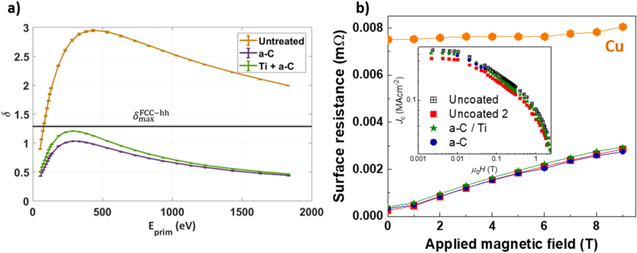
Coated conductor technology for the beamscreen chamber of future high energy circular colliders
Authors: T Puig, P Krkotić, A Romanov, JO’Callaghan, D A Zanin, H Neupert, P C Pinto, P Demolon, A Granadeiro Costa, M Taborelli, F Perez, M Pont, J Gutierrez and S Calatroni
Supercond. Sci. Technol. 32 094006
Abstract: The surface resistance of state-of-the-art REBa2Cu3O7−x coated conductors has been measured at 8 GHz versus temperature and magnetic field. We show that the surface resistance of REBa2Cu3O7−x strongly depends on the microstructure of the material. We have compared our results to those determined by the rigid fluxon model. The model gives a very good qualitative description of our data, opening the door to unravel the effect of material microstructure and vortex interactions on the surface resistance of high temperature superconductors. Moreover, it provides a powerful tool to design the best coated conductor architecture that minimizes the in-field surface resistance. We have found that the surface resistance of REBa2Cu3O7−x at 50 K and up to 9 T is lower than that of copper. This fact poses coated conductors as strong candidate to substitute copper as a beamscreen coating in CERN’s future circular collider. To this end we have also analyzed the secondary electron yield (SEY) of REBa2Cu3O7−x and found a compatible coating made of sputtered Ti and amorphous carbon that decreases the SEY close to unity, a mandatory requirement for the beamscreen chamber of a circular collider in order to prevent the electron-cloud phenomenon.
